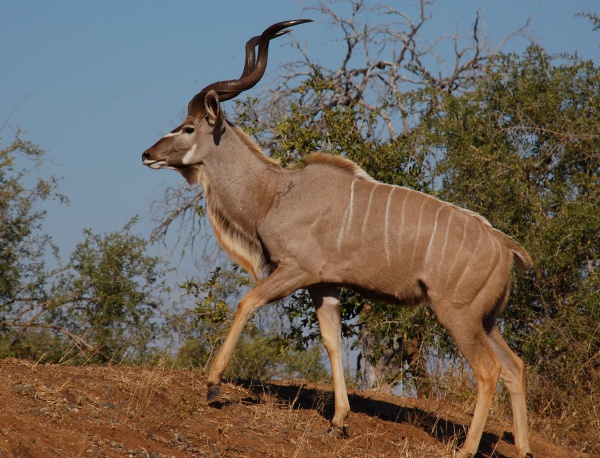Facts About Greater kudu
The greater kudu, a striking woodland antelope native to eastern and southern Africa, is currently facing significant challenges. Habitat loss, deforestation, and poaching are contributing to a decline in their population in many regions. There are two species of kudu: the greater kudu and the lesser kudu. The word "kudu" originates from the Khoikhoi language, with etymological ties to Greek words related to goats, deer, twisting, and horns.
Greater kudus possess remarkable physical attributes. They have slender bodies, long legs, and their coats vary from brown to reddish-brown with distinctive white stripes. Males are larger than females and boast impressive, spiral horns that can grow up to 187.64 cm long. Remarkably, they are among the largest antelope species, with males weighing up to 315 kg. Several subspecies have been identified, distinguished by their coloration and horn length.
Greater kudus inhabit various African countries, predominantly residing in scrub woodlands and bush areas. Their diet includes leaves, grass, shoots, and fruits, and they are most active during early morning and late afternoon. Their primary predators are lions, hyenas, African hunting dogs, cheetahs, and leopards. With their keen senses, they can frequently avoid these threats, although they are not the fastest runners.
As social animals, greater kudus form herds that disperse during the rainy season and regroup when food becomes scarce. During the mating season, males may engage in sparring matches. Females typically give birth to one calf, occasionally twins. Human activities such as habitat destruction and poaching for their meat and horns have adversely affected their populations. Nevertheless, conservation efforts have been implemented in some areas to safeguard them.
Despite population declines in certain regions, the greater kudu is still classified as a species of "Least Concern" on the IUCN Red List. Populations within parks and reserves across Africa are well-protected. Effective management in various regions, including significant populations in national parks and private conservancies, has kept their numbers relatively stable, making them a popular target for trophy hunters.

 Libya
Libya